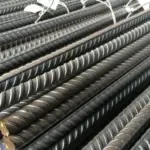Did you know there are about 2.6 million nonfatal workplace accidents and injuries in the United States private industry each year? These incidents result in billions of dollars in medical costs.
Achieving effective workplace safety screenings for employees is a process that can save your firm a thousand of money.
Here is a quick guide to help you understand the importance of safety screenings and how to conduct the screenings effectively.

The Importance of Workplace Safety Screenings
Before delving into the process of conducting safety screenings, it’s important to learn why they are crucial in the first place:
- Risk Mitigation
- Compliance
- Employee Well-being
- Cost Savings
Steps to Conduct Effective Workplace Safety Screenings
Effective workplace safety screenings are health measures and the well-being of employees. These employee screenings not only help in recognizing possible risks but also promote a safe working environment. To conduct effective safety screenings, consider the following key steps:
1. Risk Assessment
Begin the safety screening process with a comprehensive risk assessment. Identify potential safety hazards and evaluate the level of risk associated with each hazard. Factors to consider include:
- the nature of the work
- equipment used
- work environment
- specific tasks
2. Regulatory Compliance
Educate yourself with relevant safety regulations and standards that apply to your work. Ensure that your safety screenings align with these requirements to maintain legal compliance.
3. Employee Training
Before conducting safety screenings, provide thorough training to your employees. They should learn the importance of safety screenings. And also how it will be conducted and their rights and responsibilities throughout the process. Training should also cover emergency procedures and safe work practices.
4. Pre-Employment Screenings
For prospective employees, conduct pre-employment screenings. These may include:
Like Us on Facebook!
- background checks
- drug tests
- health assessments
It depends on the nature of the work and industry. Ensure that all screenings are conducted fairly and consistently for all applicants.
Subscribe Us on YouTube!
5. Ongoing Monitoring
Safety screenings should not be a one-time effort. Implement ongoing safety monitoring to identify and address safety concerns such as:
- Regular inspections
- employee feedback mechanisms
- safety audits
6. Incident Reporting and Investigation
Establish clear procedures for reporting safety incidents and near-misses. Investigate all incidents thoroughly to identify root causes and prevent similar incidents in the future. Encourage employees to report any safety concerns without fear of retaliation.
7. Safety Equipment and Training
Provide the necessary safety guide of equipment and training to employees. Ensure that they understand how to use safety gear correctly, and make it easily accessible to them. Regularly update safety equipment and training to reflect industry best practices.
8. Emergency Response Plan
Ensure that all employees are aware of this plan and conduct regular drills to prepare for potential emergencies.
Develop a comprehensive emergency response plan that includes:
- procedures for evacuations
- first aid
- crisis management
9. Employee Involvement
Foster a culture of safety by involving employees in the process. Encourage them to take part in reviews such as:
- safety screenings
- provide feedback
- suggest improvements
Recognize and reward employees who contribute to a safer work environment. By following these guidelines, companies can ensure the safety and well-being of their employees in the challenging work of hydro excavation.
Follow These Guide on Workplace Safety Screenings
Implementing effective workplace safety screenings for employees is crucial to maintaining a safe and healthy work environment. By following the guidelines outlined in this guide, employers can ensure the well-being of their staff and prevent potential hazards.
Remember, safety is a collective responsibility, so let’s work together and focus on the safety of our workplace. Start conducting regular safety screenings today and make a positive impact on your organization. Stay safe!
Did you find this article interesting? Please check out our blog site.
























